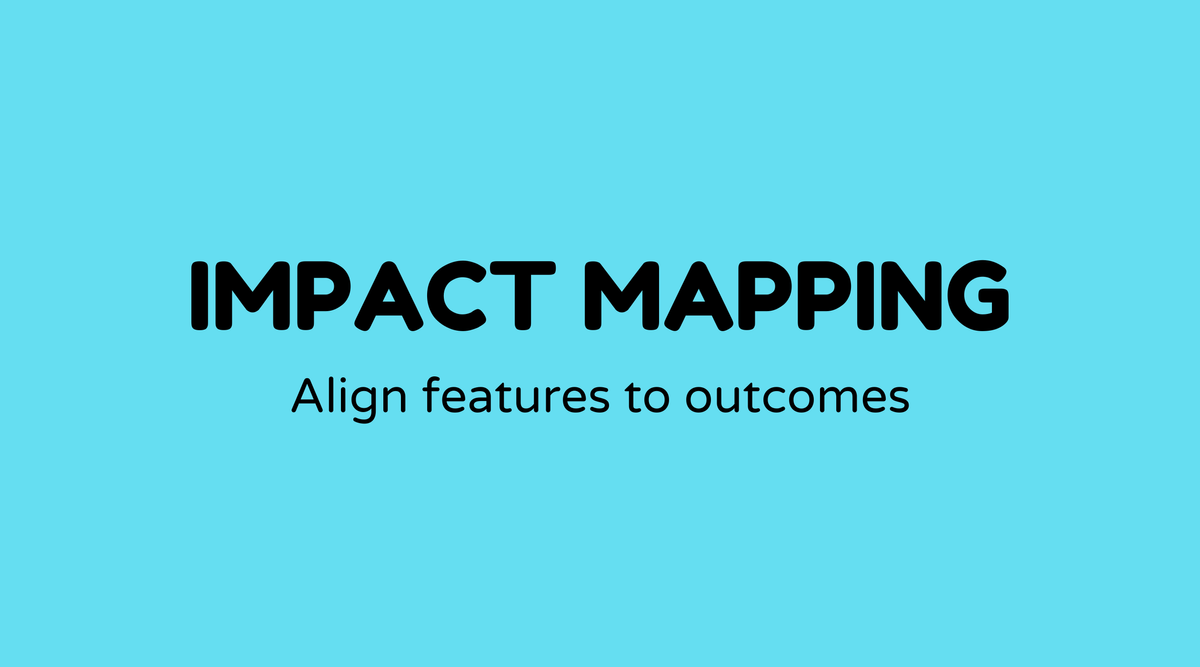Impact Mapping

Overview of Impact Mapping:
Impact Mapping is a strategic planning technique that assists teams in developing the right product by emphasizing the outcomes they aspire to achieve. It serves as a roadmap that links high-level objectives with detailed deliverables. Originally introduced by Gojko Adzic, this method promotes collaboration among stakeholders and ensures that every aspect of a project contributes to overall success. It is a vital tool for aligning business and development teams while minimizing waste in the product development process.
Recent studies underscore the effectiveness of impact mapping in bridging the divide between IT and business views. It provides a way to visualize the essential relationships between what teams create and why they create it, ultimately leading to improved decision-making processes. You can think of it as your project's guiding star.
Why Impact Mapping Matters:
Wouldn't it be great if every project hit the target? That's the appeal of impact mapping. By employing this technique, teams can circumvent common challenges such as scope creep and misallocated resources. The impact map ensures everyone is aligned and progressing in the right direction.
This approach grants you a broad perspective on potential interventions that correspond with your objectives, allowing you to prioritize efforts effectively. It also encourages adaptability. As circumstances change, you can modify your strategy without losing sight of your primary goals. Considering that an astonishing 70% of project failures stem from poor communication, impact mapping becomes a valuable tool.
What is Impact Mapping:
So, what is an impact map? It’s a visual diagram that connects your goals to user activities and features. The central focus is the business goal, which branches out into actors—the entities that can influence the outcome. Those branches then extend into impacts, defining the changes in behavior that the product aims to drive. Finally, deliverables at the end specify the potential features or projects.
Here’s a breakdown of its core components:
- Goal: The ultimate objective of your project.
- Actor: The people or things that can influence achieving this goal.
- Impact: The change these actors need to create for the goal to be met.
- Deliverable: The tangible steps or products that facilitate the desired impacts.
Impact mapping stands out by encouraging teams to consider questions they might frequently overlook. Who can achieve this goal, for instance, and how will success be measured? By addressing these inquiries, you identify the real-world impacts that your product should accomplish.
How do you do Impact Mapping:
Ready to engage and begin mapping? Creating an impact map isn't as challenging as it sounds. Here’s a simplified step-by-step guide to get you going:
-
Identify the Goal: Clearly define a business objective. This ensures everyone understands what success entails.
-
Who Can Affect the Goal?: List the actors. Think stakeholders, customers, or even competitors.
-
Determine the Desired Impacts: For each actor, consider how their behavior needs to change to help achieve the goal. This is key to ensuring you're building something meaningful.
-
Brainstorm Deliverables: Identify the deliverables or features that will enable those impacts. This is where creativity meets practicality.
-
Map It Out: Use software or good old-fashioned sticky notes to create a visual representation of your plan.
To enhance the process, engage a diverse group of stakeholders. Gathering varied perspectives can reveal unexpected insights. And remember, it isn’t a one-time task. Revisit your map to refine your strategy as conditions change.
Sample Agenda of Impact Mapping Workshop:
To illustrate the flow of a workshop, here’s a sample agenda:
-
Introduction (15 min): Brief overview of impact mapping and workshop objectives.
-
Setting the Goal (30 min): Collective brainstorming to finalize a clear business objective.
-
Identifying Actors (45 min): Discussion and listing of primary stakeholders and other influencers.
-
Determining Impacts (45 min): Work in small groups to draft potential impacts associated with each actor.
-
Defining Deliverables (60 min): Brainstorming session to list actionable deliverables.
-
Map Creation (45 min): Synthesize everything into a coherent visual map.
-
Wrap-Up and Q&A (30 min): Review the impact map, discuss insights, and address any questions.
Examples of Impact Mapping:
Real-world examples greatly enhance understanding. Consider a software company aiming to reduce product churn. Their goal would be to boost retention rates. Actors might include existing customers, user support teams, and software engineers. Desired impacts could be improved onboarding experiences and quicker response times from support. Deliverables could range from a new onboarding portal to enhanced service protocols.
FAQs
How does impact mapping differ from user stories?
- While both assist in defining product needs, impact mapping links these needs directly to an overarching business goal, ensuring relevance.
Can impact mapping be used in agile development?
- Absolutely! It's often utilized in agile environments to align short-term sprints with long-term business objectives.
Is impact mapping suitable for all projects?
- Though beneficial for many, it is particularly useful in complex projects with numerous stakeholders or in adaptable environments.
How often should impact mapping be revisited?
- Ideally, revisit it at every significant project milestone or whenever there is a considerable change in project scope or market conditions.
What tools are suggested for impact mapping?
- Tools like Miro and Lucidchart are popular among teams for creating digital impact maps.
Does impact mapping require extensive training to implement?
- Not necessarily. A facilitator with basic knowledge can effectively guide a team through the process with supportive resources and workshops.



